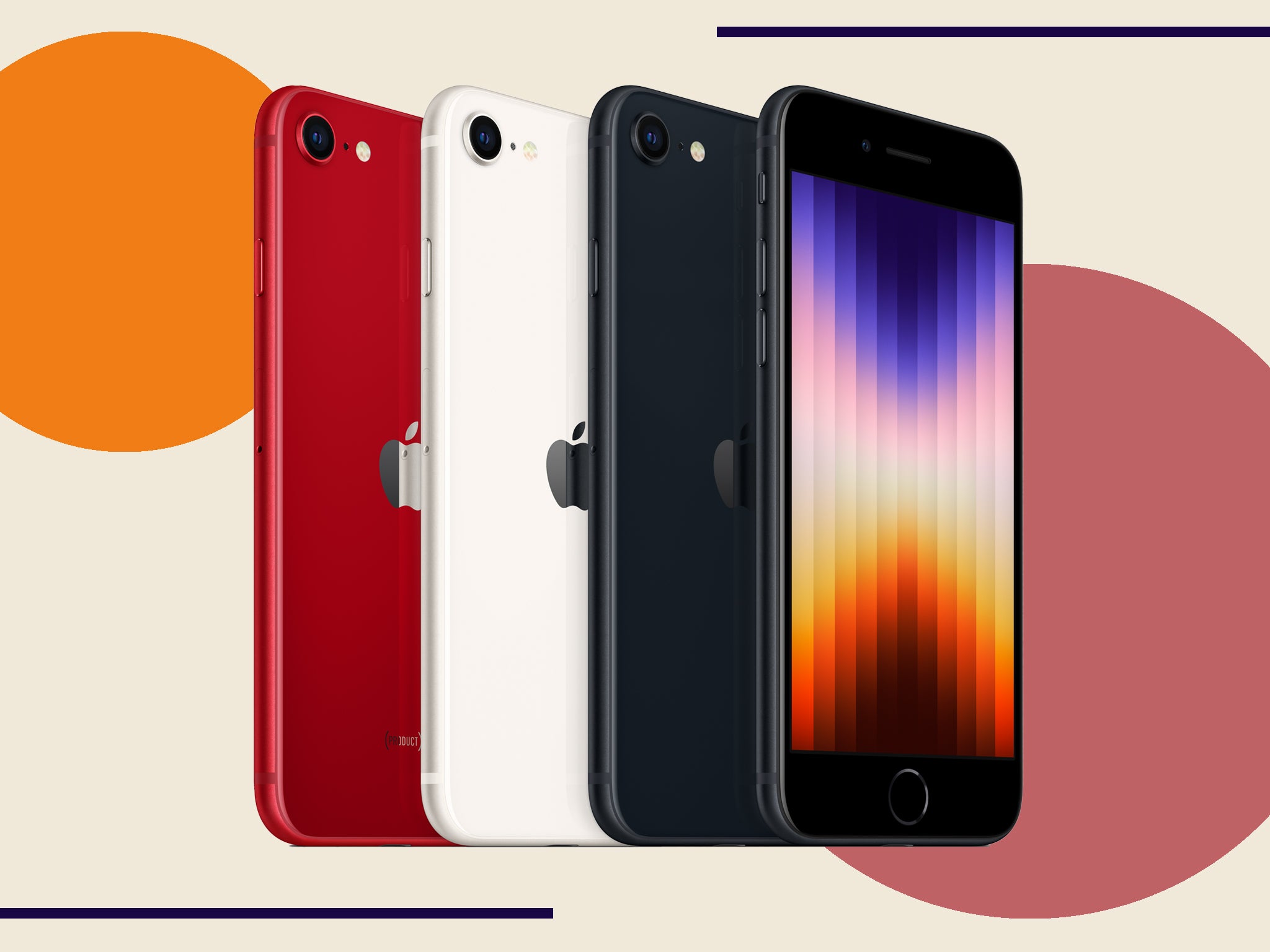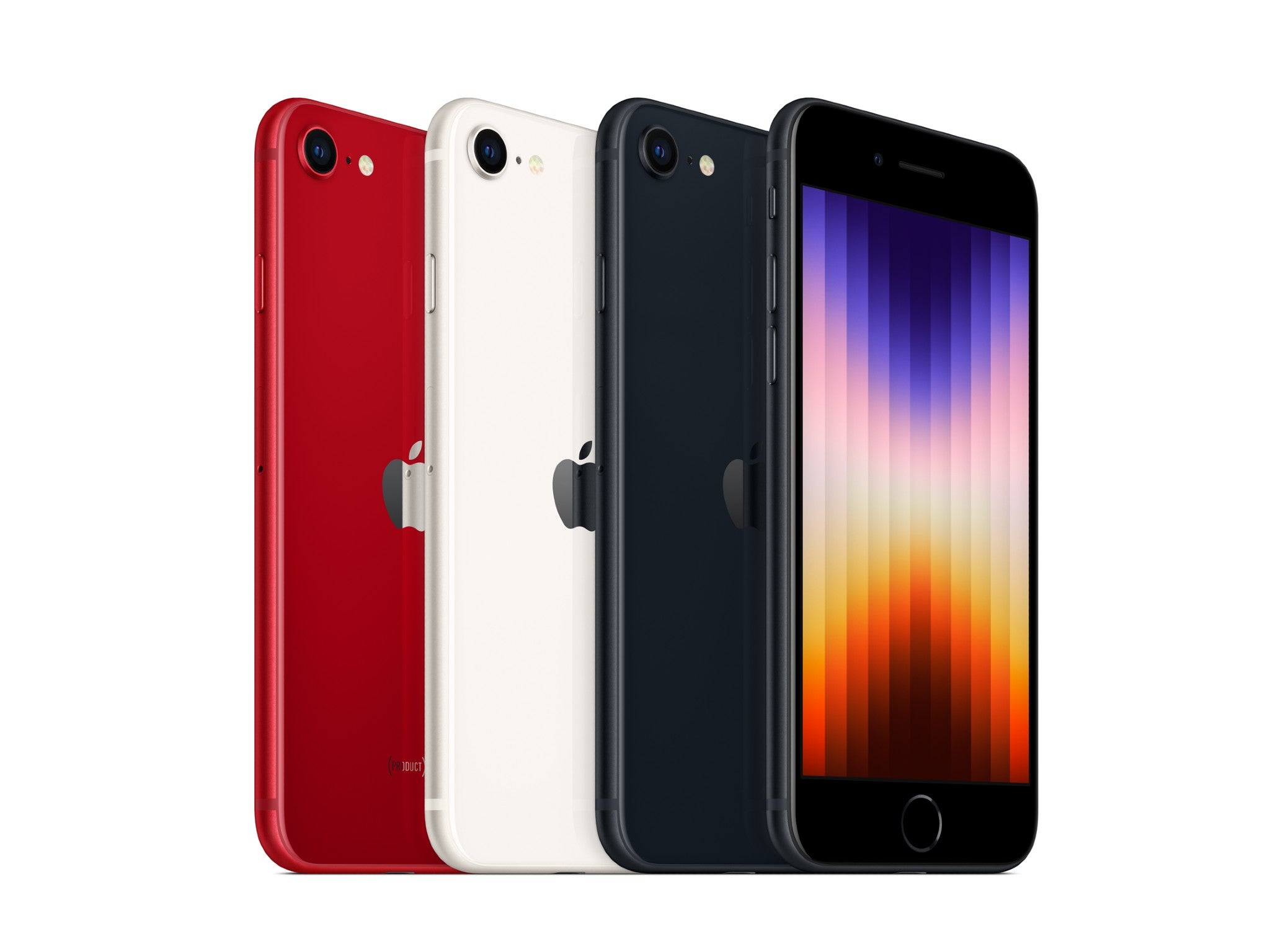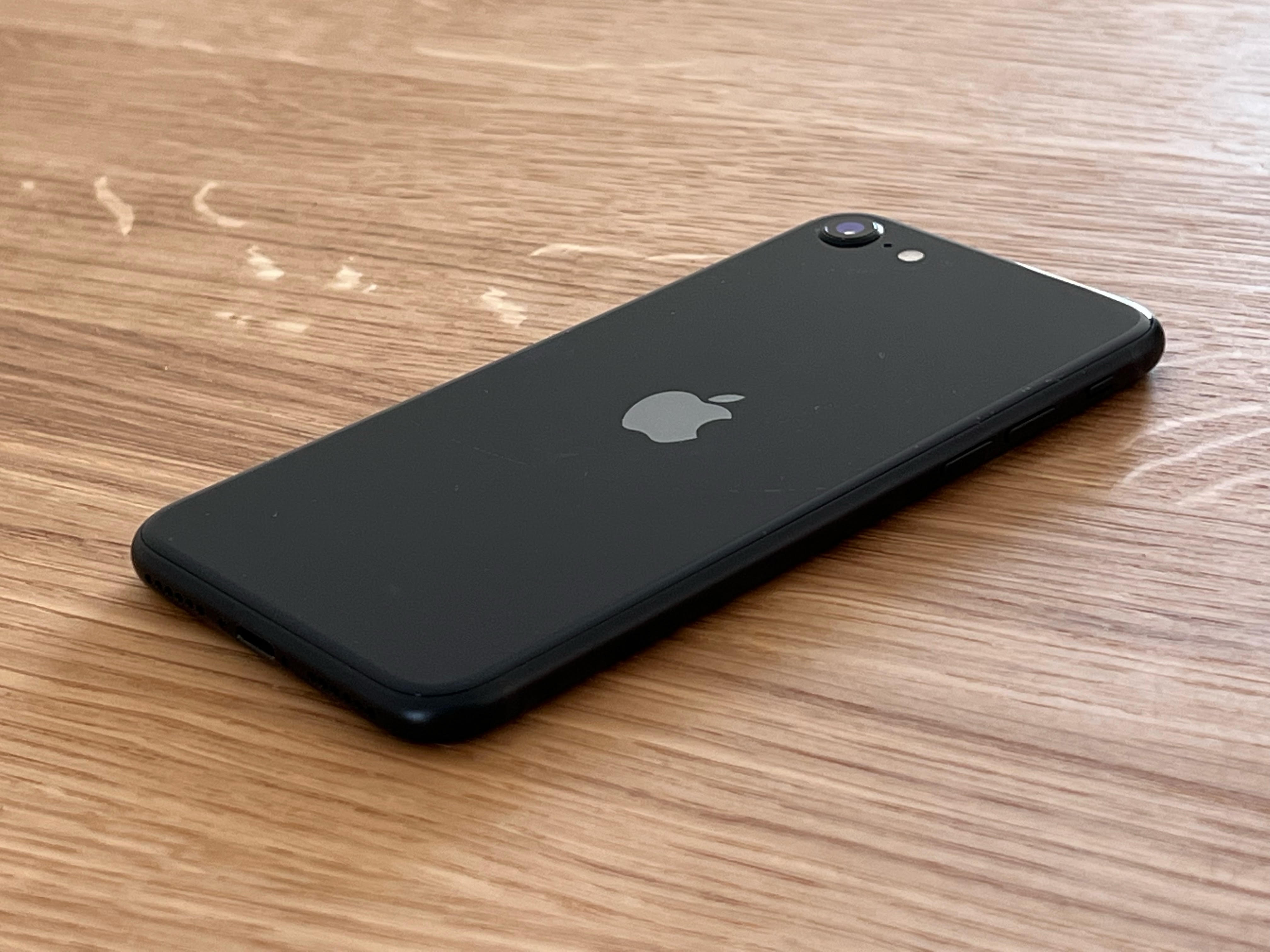The Independent's journalism is supported by our readers. When you purchase through links on our site, we may earn commission. Why trust us?
Apple iPhone SE review: Astonishingly fast, affordable and way ahead of its rivals
It doesn’t look the swankiest, but this is a sensational handset with plenty under the bonnet

Apple’s latest iPhone is a third generation of the highly popular iPhone SE. This is the company’s most affordable handset (it costs £419 for the entry-level version with 64GB storage). While it looks very similar to the previous version on the outside, which launched two years ago, it is substantially different under the bonnet.
Most companies, when releasing a mid-range or budget phone, will put together a new design and cram in off-the-rack components. But Apple is not most companies. Instead, it takes a previously successful phone and builds in its latest, super-fast processor – in this case, the same A15 Bionic chip that’s in the company’s latest iPhone 13. There are some other changes, too, but many components are as they were before. It means that superficially similar hardware is transformed by the power of the new chip.
Apple’s method is not perfect but, as we’ll see, it’s pretty darn good. The battery has been changed for a bigger one that promises an extra couple of hours per day, and there’s also 5G connectivity – something that is still rare in a phone at this price point.
You can currently pre-order the latest SE (£419, Apple.com) until Friday 18 March, when it officially launches.
How we tested
We’ve been using the iPhone SE since a few hours after it was announced on 8 March, putting it through its paces to check battery life, taking photographs to test if the camera really is as significantly improved as Apple claims, and judging the usability of a phone that’s noticeably smaller than our regular telephonic companion. As this is the lowest-priced iPhone, we’ve also assessed if it’s good value.
Read more:
Apple iPhone SE, 3rd gen: £419, Apple.com – preorder now

Rating: 8/10
- Screen: 4.7inCD
- Processor: Apple A15 Bionic
- Storage: 64GB, 128GB, 256GB
- Dimensions: 138.4mm x 67.3mm x 7.3mm
- Weight: 144g
- Rear camera: 12MP
- Front camera: 7MP
Design
Let’s start with what you know. You’ll have seen the design of this phone, for sure. Something like it first surfaced in 2014 in the iPhone 6, was gently improved in the subsequent iPhone 6s and iPhone 7, and more drastically overhauled for the iPhone 8 in 2017, which introduced a glass back to make wireless charging possible.
Over the years, the antenna markings that weren’t attractive on the iPhone 6 were replaced by delicate and now virtually invisible ones on the iPhone 8, which was then reissued as the iPhone SE two years ago.
In other words, it’s a familiar look and something Apple would call a beloved design.
It’s very different from the current iPhone 13 series. The SE has a pillowed display with curved edges, matched by the rounded aluminium frame and gently curved edges to the flat back. This makes for a phone which is immaculately comfortable in the hand and has an inviting feel to it.
Also unlike the iPhone 13, this phone does not feature Face ID, instead using the Touch ID home button on the front to unlock the device. This in turn means it is not a phone with an all-screen front. Instead, there are areas at the top and bottom that are screen-free. Touch ID has the advantage that you can surreptitiously check your emails under the desk in a dull meeting, for instance, without the need to have the phone more evidently on display.
This is a small phone, in a world that’s almost completely focused on big-screen devices, so Apple is selling differently from most of the market. It has a 4.7in display and its comfy rounded dimensions will fit the smallest of mitts easily.
It’s true that the iPhone 13 mini actually has slightly smaller dimensions and, because it is an all-screen affair, has a bigger, 5.4in, display. But that phone is quite a bit more expensive, as we’ll see.

The new iPhone SE comes in different colours from the previous model. Midnight is almost-but-not-quite black, with hints of dark indigo that gleam in the right light. This colour is the sleekest-looking iPhone SE and is simultaneously understated and eye-catching. It looks tremendous.
There are two other colours – the red is bright and eye-catching, and the third shade, starlight, is a pale but attractive silver-white hybrid, but with a golden tinge that’s subtle and low-key.
What’s remarkable about the design is not what you see, but what you don’t. This is a phone chassis that was designed for 4G connectivity. You’d expect installing a faster 5G antennae to prove problematic. You might even have expected to see a fatter iPhone, or one redesigned to accommodate the different connectivity, or – and this would have been most likely – noticeably reduced battery life. But that’s not the case.
MagSafe, a ring of magnets inside the back of the iPhone which ensures the handset connects properly with a wireless charger, is missing here, which is a shame, though this may be a cost issue. Wireless charging is still included, though.
Display
This is an LCD screen, not OLED, as the current iPhone 13 range is. The resolution is lower than the iPhone 13, too. But that’s not to say that this is an unappealing screen. Apple’s displays are routinely strong on colour fidelity and pin-sharp detail. They need to be when the display is this size: text is often small and needs to be crystal clear.
As someone who uses a phone with a 6.7in display, switching to one a full 2in smaller was striking. Typing on the onscreen keyboard was the most dramatic difference, and it took a little time to reacquaint ourselves with the smaller letters.
In other ways, the size of the screen was no impediment. It was as inviting and immersive as other displays and there’s no intruding notch or cut-out when watching videos.
Performance
A phone’s performance relies, most of all, on its processor, and the A15 Bionic is second-to-none.
Back in 2010, when Steve Jobs revealed the iPhone 4, he said in an almost throwaway remark, “and it’s all our own silicon”. That was the A4 chip and Jobs was sounding the starting pistol in a race which has seen Apple outrun its rivals in processing power on a regular basis. The A15 Bionic chip is fundamental to how different the new iPhone SE is from the last one, and from every mid-range phone from other manufacturers.
This processor easily beats chips on other flagship phones, so it’s no surprise that it is leagues ahead of comparably priced handsets. It promises, and in this case delivers, speed and versatility, offering machine learning to ensure more is done on the device, for instance. The performance is sensationally good.
Battery life
Bespoke processors can be designed to dovetail perfectly with bespoke software, and the power-efficient iOS 15 is emblematic of this.
Read more: 8 best phones for long battery life: Failsafe handsets
Even so, one thing is for sure: 5G makes big power demands. Remarkably, Apple has managed to increase battery life on the new iPhone SE. The company claims you get an extra couple of hours of video playback from a full charge, for instance, compared to the previous model. Certainly in testing it felt like the phone went on and on. Our usage involved some wifi connection, some 4G and some on the more demanding 5G. Often, the 5G connection was the fastest of all. Mileage, as they say, will vary, but this phone has strong battery life. Apple says that it has better battery life than all its previous phones with 4.7in screens.
Camera
We were sceptical about how well the iPhone SE camera would perform compared to flagship phones, where bigger sensors and higher pixel counts play a part. After all, this is the same camera sensor and lens complex that is found on the last iPhone SE, in turn inherited from the iPhone 8.
But the sensor is only one part of an equation that increasingly relies on what Apple calls computational photography, and here the A15 Bionic processor is crucial.

It means that the image signal processor built into the A15 comes into its own. It can take multiple images and combine them to maximise the resolution, colours and sharpness to deliver strong results. Part of this is what Apple calls “deep fusion”, and it wasn’t on the previous iPhone SE or indeed most other iPhones. The processor makes it possible here, reducing image noise and increasing the vividness of textures, particularly for low-light or mid-light scenes – the very areas in which most cameraphones struggle.
Something that was introduced on this year’s iPhone 13 was Photographic Styles. You can, if you wish, choose a distinctive style for your photos before you take them by opting for, say, vibrant or rich-contrast images that emphasise different qualities automatically. You can change your signature style whenever you like, so the next shots will have a different flavour, though you can’t restyle previously taken photos.
The key thing here is that, whichever style you choose, the camera is still emphatic about providing true-to-life skin tones.
Photographic styles also work on the front-facing camera, even though it only has 7MP resolution. An upgrade to this sensor would have been good, but that’s not Apple’s way with its SE phones. Note, though, that the brilliant deep fusion mentioned above is, for the first time in an iPhone SE, available on the front-facing camera, too, which is pretty cool.
Read more: Samsung Galaxy Z flip 3 smartphone review
Apple’s camera software (and hardware) has been especially strong in recent years, but its video capabilities have routinely outdone the competition. That’s also the case here, with the software and processor wringing every drop of goodness out of the video capabilities, with optical image stabilisation and stereo audio recording, for example.
One final note on the camera: portrait mode, with its brilliant artful blurring of the background to put your subject into sharp relief, only works with people and groups, not pets or objects. This is the same with previous single-camera iPhones and is down to the way the effect is achieved, but it’s worth knowing.
The verdict: Apple iPhone SE, 3rd gen
The latest iPhone SE is far and away the most affordable iPhone you can buy. At £419, it’s £20 more than the last iPhone SE (the one which was on sale until a few days ago), but while this looks the same, the user experience is radically different.
The performance is on par with high-end, high-price flagship phones, but it’s £70 cheaper than the iPhone 11, which has a much less powerful processor and lacks 5G connectivity (although, to be fair, it is still a tremendous phone).
This is a small phone will appeal to people who don’t like or can’t manage giant-sized screens. If you want the latest-design small phone then the iPhone 13 mini offers a bigger screen in a smaller size, with the same processor, Face ID, an OLED screen and dual cameras. But it costs £679.
There are certainly significant omissions in the iPhone SE: we miss MagSafe, for instance. And many will feel this design no longer looks cutting edge. There are plenty of much cheaper phones which manage dual rear cameras. But Apple’s method is to take a familiar design and leave it mostly unchanged on the outside, reserving the upgrades for the internals. Adding a second camera, for instance, would have needed a wholesale redesign, which would have put the price up.
So the iPhone SE, though it doesn’t have the latest design or multiple cameras, is astonishingly fast and capable. It boasts a processor more powerful than many flagship phones. This contributes to the great battery life, the management of 5G connectivity, and to performance that is a country mile ahead of anything else at this price.
Voucher codes
For the latest mobile phone discounts and other tech offers, try the links below:
For big screens and even better cameras, check out the best phones you can buy, from Apple, Samsung, Google and more